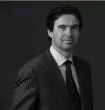The Dutch Central Bank (DNB) has recently published a brochure on countering corruption. This brochure is the outcome of DNB's theme research into corruption within banks and insurance companies in 2013. The research shows, among other things, that many financial undertakings have a need for more guidance and information in the fight against corruption within their own organisations. DNB addresses that need by means of good practices that provide insights into the assessment framework that it developed for banks and insurance companies.
The brochure is composed of two parts. The first part discusses a four-step plan for making corruption risks within an organisation transparent. The four-step plan consists of the following:
- Identification of the risks
The scope of the analysis, including internal and external sources (e.g., legislation and regulations), the parties involved and the period of the analysis, has to be determined in advance. - Analysis of the risks
The role of the identified risks within the undertaking has to be assessed taking into account internal and external factors such as departments, business lines, products, services, international activities, operational processes. In order to determine the vulnerability of the undertaking to corruption risks, the possibility that corruption may occur and the impact thereof has to be determined. - Taking appropriate measures
After the identification of the risks, appropriate measures need to be formulated and taken in order to control these risks. - Monitoring risks and tackling shortcomings
The measures taken need to be monitored on effectiveness and efficiency. Additional measures will need to be taken if the control of corruption risks fails or procedures and measures are considered to be insufficient.
The guiding principle in this respect is that the fight against corruption should be a part of a periodic risk analysis process, of which the results are recorded.
The second part of the brochure elaborates on the third step: taking measures to exert better control over risks. The brochure provides examples of measures with regard to amongst other things organisation and culture, governance and third parties. The concepts of gifts, hospitality, entertainment, donations, charity, sponsoring, and personal networks and interests are also considered to be subject to a higher risk of corruption.
DNB's brochure can be a useful tool in guiding financial undertakings in their fight against corruption. The four-step plan and the good practices offer a good point of reference.
The content of this article is intended to provide a general guide to the subject matter. Specialist advice should be sought about your specific circumstances.






